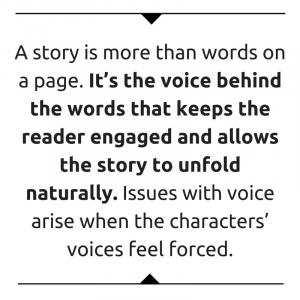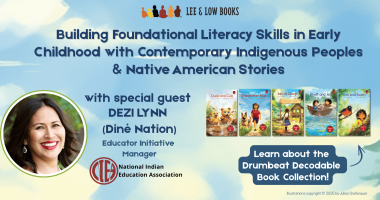It’s May and with the arrival of spring comes the opening of the nineteenth annual Lee & Low New Voices Award! We reviewed submissions from the past few years and identified several common pitfalls amongst the contest entries that did not win. We compiled these into the list below so that writers interested in submitting to our contest can avoid them:
- The manuscript did not meet our submissions guidelines.
Each year we receive submissions that our contest judges must pass on because the stories do not adhere to our New Voices Award contest guidelines. These submissions may be great stories but if they’re not the right fit for the contest they can’t receive the award. Such submissions that do not make the cut include:
- Nonfiction and biographies of very popular historical figures or events: At Lee & Low, we are interested in introducing readers to compelling historical figures and events, especially those that have been overlooked by Western history. Check out the New Voices Award-winning titles It Jes’ Happened: When Bill Traylor Started to Draw and Sixteen Years in Sixteen Seconds for a few examples of the kinds of unsung heroes we’re on the look out for.
- Stories with anthropomorphic characters.
- Manuscripts with excessive word counts. If a submission far surpasses our 1,500-word limit, it’s probably better suited for a longer format than a picture book. If you’re an unpublished middle grade, graphic novel, or young adult novel writer, consider submitting to our New Visions Award, a contest geared towards longer literary works for older audiences.
- The nonfiction was dry.
We often receive nonfiction and biography submissions where the writing is too dry. The manuscript is bogged down by facts and reads more like a list of events or a news article than a story. Researching a historical event or figure and distilling that information into a picture book manuscript for young readers is no easy feat. To help aspiring nonfiction writers, our 2014 New Voices Award Winner, Andrea Loney, discusses the difficulties she faced while writing Take a Picture of Me James VanDerZee, a picture book biography of a prolific African American photographer, and the way she overcame them in this blog post.
- The dialogue didn’t feel natural.
A story is more than words on a page. It’s the voice behind the words that keeps the reader engaged and allows the story to unfold naturally. Issues with voice arise when the characters’ voices feel forced. This is especially noticeable in scenes with dialogue when children characters speak or use mannerisms that adults would. When the overall voice of a story doesn’t feel natural, it pulls the reader out of the story. If you’re concerned about the dialogue in your picture book narrative, check out this blog post where two New Voices Award-winning writers share ten do’s and don’ts on writing realistic dialogue.
- It didn’t offer a fresh perspective.
Each year we receive many submissions with popular themes like “the first day of school” or “dealing with the loss of a loved one”. We are always interested in reading stories like these, but because the storylines are so popular the submissions are often predictable. Our  judges are drawn to stories that approach popular storylines from a different angle or do something unexpected with the premise. The New Voices Award-winning titles Janna and the Kings and The Blue Roses both feature young protagonists coping with the loss of a grandparent, but they address this premise in original ways. If your story has a popular storyline, consider how you can make it standout from similar narratives.
judges are drawn to stories that approach popular storylines from a different angle or do something unexpected with the premise. The New Voices Award-winning titles Janna and the Kings and The Blue Roses both feature young protagonists coping with the loss of a grandparent, but they address this premise in original ways. If your story has a popular storyline, consider how you can make it standout from similar narratives.
- There were issues with the pacing.
A story’s pacing—the speed at which the events unfold—is a key component of storytelling. It’s important that the pace be consistent throughout the story. We often receive manuscripts that begin with great pacing but then rush through the climax of the narrative. Or the story is slow to start and doesn’t find its stride until the end. As you read your story ask yourself: Does the action feel like it’s dragging? Does it feel like there are too many events happening too quickly? This will help you get a better sense of how the narrative is flowing and help you strengthen the pacing.
We also recommend sharing your story with readers who will give you constructive feedback, then revising your story based on that feedback. Revision is an important part of the writing process. It’s how you address the weaknesses in your story. Many of our New Voices Award-winning manuscripts are by writers who are part of critique groups, professional writers, or members of the Society of Children’s Book Writers and Illustrators (SCBWI). For more on what revising entails, check out this blog post where two New Voices Award winners discuss their revision process.
These are just five common issues we’ve seen throughout the New Voices submissions in the past few years. Observing all of them may not guarantee that your submission wins the contest, but it will make your manuscript a stronger contender. The most important common pitfall to avoid is giving up. Our 2017 New Voices Honor, Kelly J. Baptist, submitted to the contest five times before her manuscript won the honor! So go forth, writers! Craft a great cover letter, revise your two strongest manuscripts (we welcome up to two submissions per participant), and submit your work to the New Voices Award!
Further Reading
How to Make Your New Voices Submission Stand Out
Submitting to Our New Voices Award: Tips From an Editor
Also check out our New Voices Award Winners & Honors Collection! Don’t forget that the deadline to submit your picture book manuscript is August 31, 2018.








